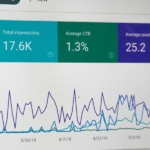New York’s budget crisis in 2024 has become a pivotal issue as conflicting priorities vie for limited funds. The challenge stems from the state’s shrinking revenue base, compounded by a growing demand for services in key areas such as education, infrastructure, public safety, health, and housing. Balancing these needs with fiscal responsibility has proven to be a difficult task for lawmakers. Below is an in-depth look at the major budget priorities and the key challenges they present.
Education Funding
School Reopening Costs
The issue of education funding remains at the forefront of budget discussions. Schools are still grappling with the financial impact of pandemic-related disruptions. With the need to accommodate new health standards, ensure access to remote learning tools, and reduce overcrowding, reopening schools has brought new costs. Enhancing digital infrastructure is critical to bridge the learning gaps that emerged during the pandemic, and addressing teacher shortages has become more urgent than ever. The challenge is balancing these essential investments with the state’s strained financial resources.
Higher Education Investment
New York’s university system is also feeling the pinch. Both state universities and community colleges are facing potential budget cuts, which may lead to larger class sizes and reductions in course offerings. Increasing financial aid to help low-income students, who are disproportionately affected by rising tuition costs, remains a priority. Additionally, there is a push to improve campus facilities, but with limited state funds, these upgrades may face delays or reduced scope, jeopardizing the accessibility and quality of higher education.
Infrastructure Development
Road and Bridge Repairs
New York’s aging infrastructure has been under stress for years, and recent evaluations suggest that billions of dollars are needed to repair the state’s deteriorating roads, bridges, and tunnels. Without these repairs, safety risks and economic inefficiencies will grow. The question of how to finance these improvements remains contentious. Some policymakers are advocating for the introduction of tolls or other user fees to offset the costs, but there is resistance from communities who fear these fees would disproportionately impact lower-income residents.
Public Transit
The Metropolitan Transportation Authority (MTA), which oversees public transit in New York City, faces a massive budget shortfall. The MTA has seen a significant drop in ridership due to the pandemic, which has worsened its financial situation. While state officials have proposed various funding options, including congestion pricing and increased state subsidies, public transit advocates argue that these measures are insufficient. The MTA’s budget crisis not only affects transportation in New York City but also threatens the broader state economy, as millions of commuters rely on the system.
Public Safety Spending
Police Budget Cuts vs. Reforms
Public safety is another critical issue in the budget debates. In recent years, there has been growing pressure to reevaluate police budgets, particularly in light of calls for social justice reform. Advocates for reallocating funds toward community programs argue that reducing the police budget could fund initiatives that address the root causes of crime, such as poverty and mental health issues. On the other hand, law enforcement agencies argue that reducing their budgets could undermine public safety, particularly in high-crime areas. Finding a compromise that addresses both public safety concerns and the demand for reforms is proving to be a complex task.
Emergency Services
In addition to police funding, fire departments and emergency medical services (EMS) are seeking increased budgets to meet growing demands. Many departments, particularly in rural areas, are operating with outdated equipment and insufficient staffing. The state must balance the need to support these essential services while managing its overall spending. Proposals for improved funding mechanisms, such as emergency response taxes, are being considered, but these face opposition from taxpayers.
Health and Social Services
Medicaid Funding
New York’s Medicaid program is one of the largest in the country, accounting for a significant portion of the state’s budget. The program provides essential healthcare services to millions of low-income residents, but rising healthcare costs have put immense pressure on the state’s finances. Lawmakers are exploring cost-saving measures, such as tightening eligibility requirements and reducing payments to healthcare providers. However, these proposals have sparked pushback from healthcare advocates who warn that such cuts could leave the most vulnerable populations without adequate care.
Mental Health Services
The state is also grappling with how to address the growing need for mental health services. The pandemic has exacerbated mental health crises, leading to increased demand for treatment and support. Advocates are pushing for more funding to expand mental health services, particularly for low-income and homeless populations. However, this expansion is expensive, and with other priorities competing for funding, the state must find creative ways to allocate resources.
Climate and Energy Initiatives
Green Energy Transition
New York has committed to ambitious climate goals, including a major reduction in carbon emissions by 2050. To meet these targets, the state needs to invest in renewable energy sources like wind and solar, upgrade the electric grid, and incentivize energy-efficient technologies. However, funding these initiatives requires a significant outlay of public funds. Some lawmakers are proposing new green bonds or carbon taxes to finance these projects, but there is concern about the potential impact on businesses and consumers.
Resilience Against Climate Change
As climate change continues to impact the state, there is an urgent need for resilience measures to protect against natural disasters like floods and hurricanes. These measures include upgrading water management systems, building flood defenses, and improving emergency response capabilities. However, these projects come with high costs, and finding the funds to prioritize climate resilience in the budget remains a challenge.
Housing and Homelessness
Affordable Housing Shortages
New York is facing a housing crisis, with rent prices continuing to rise and affordable housing units in short supply. The state has been working to increase funding for affordable housing developments, but progress has been slow due to limited financial resources. Additionally, zoning laws in certain areas make it difficult to build new housing units, further compounding the problem. Lawmakers are debating how to reform these laws to allow for more development, but they face opposition from communities concerned about changes to the character of their neighborhoods.
Homelessness Support
Homelessness remains a persistent issue in many of New York’s urban centers. The state has increased funding for shelters and supportive housing, but advocates argue that more needs to be done. Mental health and addiction services are also crucial components of addressing homelessness, but these programs are often underfunded. Balancing the need for immediate shelter with long-term solutions like permanent housing and mental health support is a key challenge for lawmakers.
Tax Policy and Revenue Shortfalls
Addressing the Deficit
New York is facing a significant budget deficit due to lower-than-expected tax revenues and increasing spending demands. Some lawmakers are pushing for tax hikes, particularly on high-income earners, to help close the gap. However, there is concern that raising taxes could drive businesses and wealthy individuals out of the state, further reducing the tax base. Proposals for new revenue streams, such as legalized gambling and recreational marijuana, have also been introduced, but these measures will take time to generate substantial income.
Federal Aid and Relief
There is hope that additional federal aid could help alleviate some of New York’s budget pressures. The state has already received significant federal relief funds in the wake of the pandemic, but the long-term impact of these funds is uncertain. Some lawmakers argue that relying on federal aid is unsustainable and that New York must develop more self-sufficient fiscal policies to avoid future crises.
The debate over New York’s budget priorities underscores the complexity of balancing limited resources with growing demands across multiple sectors. As lawmakers work to finalize the budget, difficult decisions will need to be made to ensure the state remains fiscally responsible while addressing the diverse needs of its population. From education and infrastructure to climate change and health services, each priority comes with its own set of challenges that will shape New York’s future. Finding sustainable solutions that address both immediate and long-term needs is crucial to navigating the state’s budget conundrum.



















